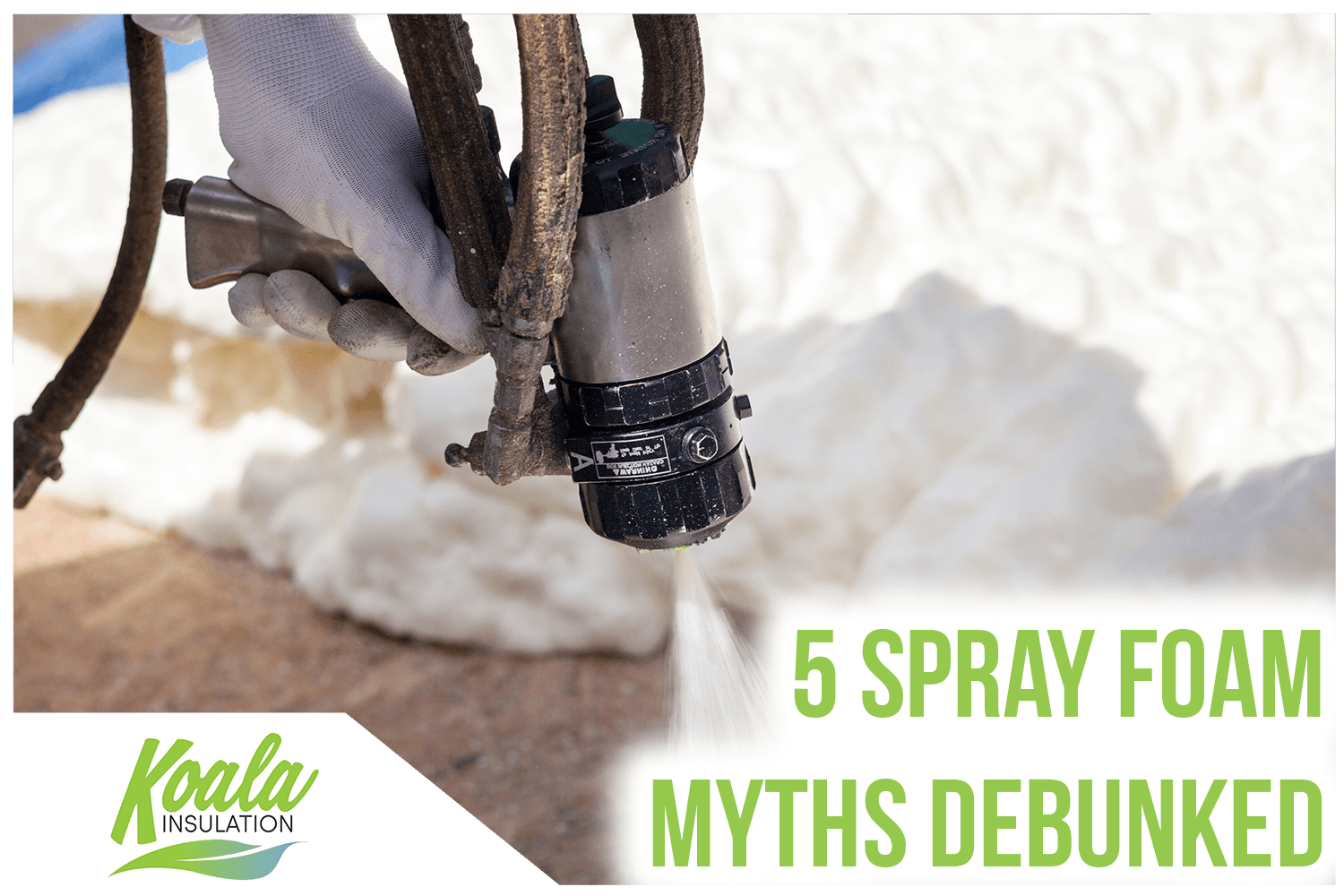Denver’s Insulation Experts Debunk Common Spray Foam Myths

At first glance, the amount of information that comes with choosing the right insulation can feel overwhelming. Especially for new homeowners, finding insulation that keeps your home safe and comfortable without breaking the bank can seem a bit confusing when unfamiliar with the industry. While there are potential risks and negatives that come with each type of insulation material, it's important not to get caught up in some of the more extreme myths.
One of the lesser-known and more misunderstood types of insulation materials is spray foam. While this type is extremely useful for moisture barriers and air sealing, it is one of the more initial expensive choices. Additionally, because the chemicals are mixed on-site, some homeowners are worried about potential health hazards. Your local insulation experts at Koala Insulation of Southeast Denver are here to help not only disprove some common myths but also educate you as a homeowner on the benefits of spray foam for your home.
What is Spray Foam Insulation?
Spray foam, also known as spray polyurethane foam (SPF), is a chemical-based insulation that creates a strong insulator and air barrier. The material starts as two chemicals mixed on-site which requires training and experience to correctly develop before the mixture is fed through an applicator gun. Most often used on ceilings, within walls, and in between joists and floor cavities, the insulation is sprayed onto a surface where it rapidly expands and fills any cracks or holes.
There are two types of spray foam insulation: open-cell and closed-cell. Open-cell spray foam is used more often in hot climates and when applied resembles bubbly, cloud-like foam. Closed-cell is more dense and rigid, making it a great choice for structural integrity and as a vapor barrier. To learn more about the differences between the two and what kind of training technicians need to undergo, read Koala Insulation of Southeast Denver’s spray foam safety article.
5 Common Myths and The Solution
MYTH: Spray Foam is Hazardous
It can be daunting to have technicians in protective suits mixing chemicals on your property. While trying to apply spray foam yourself as a DIY project would be considered dangerous, our technicians are trained and experienced in applying spray foam properly throughout the house. Koala Insulation also has additional procedures in place to ensure the material is entirely dried before bringing anyone back into the household to go about their daily functions.
MYTH: Open-Cell Spray Foam is Better or Vice Versa
While open-cell has its own benefits that function better than closed-cell, the same can be said for the other type of spray foam. Each has its own strengths in comparison and therefore one can't be considered officially "better" than the other. It's more about what you and your home may need at the moment. For example, because closed-cell spray foam has a higher R-value, it takes less material to resist the transfer of heat through structures. On the other hand, open-cell spray foam is considered a better material for sound absorption, pest prevention, and sealant in hot climates.
MYTH: Spray Foam is a Newer Material
While it’s not necessarily common for homeowners to be familiar with spray foam, especially as a preexisting material in their home, this insulation has been around since the 1980s. The next time you go into a commercial building with an exposed ceiling, take a closer look at the texture. If it seems to be bubbly or rigid, you’re more than likely looking at a spray foam application with paint covering to blend in with the rest of the ceiling.
MYTH: Spray Foam Insulation isn’t Worth the High Cost
It's true that the initial cost of spray foam is considerably higher than other insulation materials you can choose to have installed. However, spray foam also has one of the better returns on investments from other common materials like fiberglass and cellulose. Because it has a longer lifespan and easier coverage, less material is used and what is applied doesn't need to be maintained as often. When compared to other materials, you'll typically need to inspect and update your insulation every few years because of pests, moisture, and other general wear. Energy Star estimates homeowners save about 20% on energy bills after insulation and air sealing are applied, adding to the cost-benefit of a spray foam installation for about 15 years.
MYTH: Spray Foam is a Fire Hazard
If mixed incorrectly, mishandled, or installed without the proper precautions, spray foam doesn’t naturally have any flame retardant or resistant properties. However, this is where intumescent coating comes in – this is a barrier that’s typically painted on top of the spray foam after the job. Intumescent coating is used to cover many potentially combustible construction materials in almost every type of building, making it a routine procedure for spray foam installers to ensure the additional safety of your household.
Consult Your Local Insulation Experts
When it comes to keeping your home comfortable and safe, it's important to know the details of what's being installed in your home. While spray foam insulation is a safe and efficient material, you and your household should still understand the nuances and steps it takes to make it safe. Not only does it require skill and expertise to handle spray foam, but it also requires a team of trusted industry experts to apply it properly and efficiently throughout your home.
Our insulation experts at Koala Insulation of Southeast Denver are dedicated to bringing safety and comfort to your home, prioritizing your needs and interests. Our priority is to educate you and your household on the importance of insulation and air sealing, helping you make the best decision that also considers your budget. Contact our team today to learn more about spray foam and schedule a free evaluation to see if spray foam is the right choice for you.
Find Your Location


Get a quote


